Material options for decks
If you are considering having a deck installed, you will need to make the decision what type of decking material to choose. Your choice will be guided by your budget, the amount of maintenance you are willing to undertake, and the longevity you are looking for. No matter what board type you choose, the lifespan of your deck will only be as durable as the subframe you choose, so boards and subframe need to be coordinated accordingly.
|
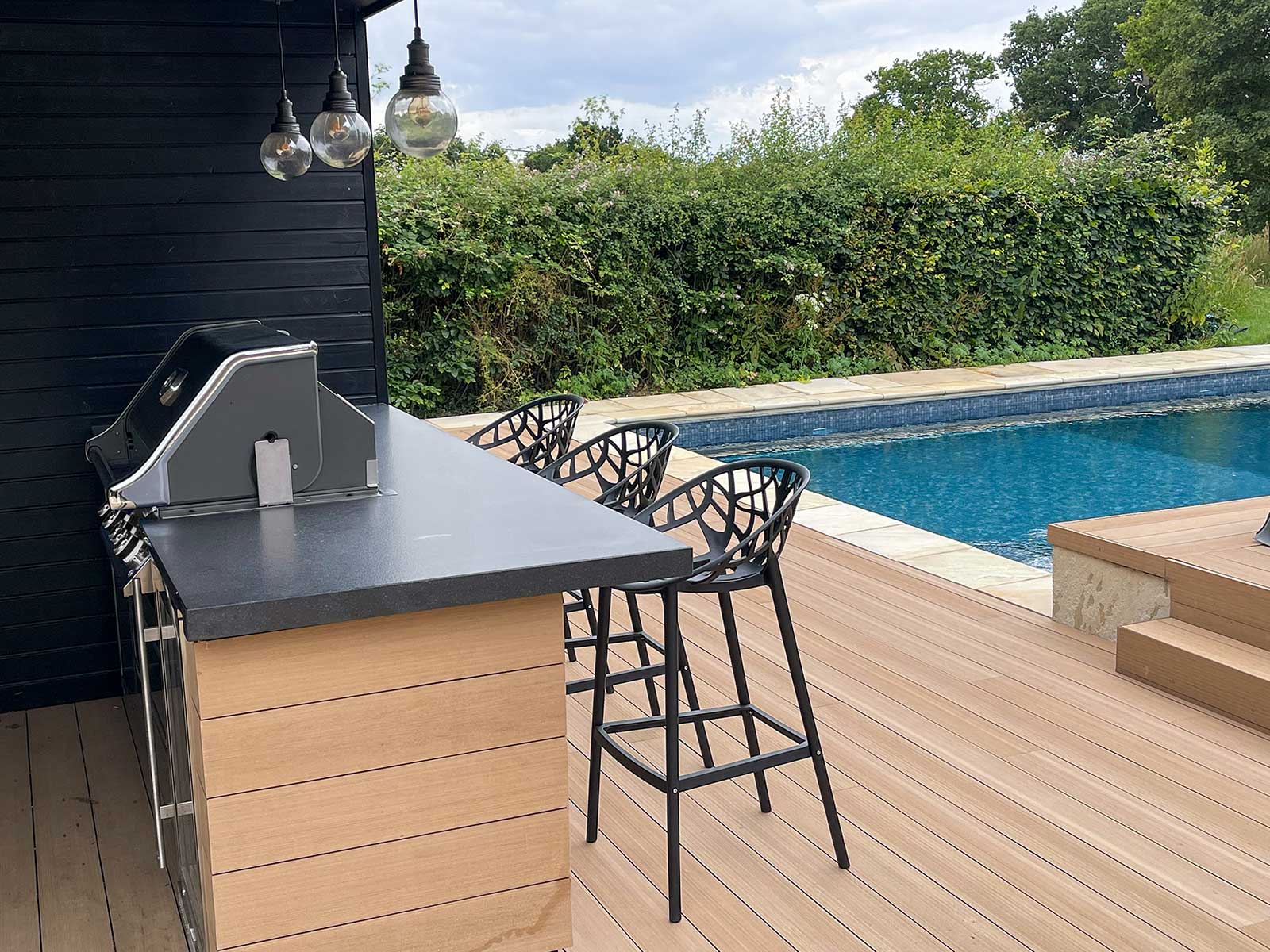
Softwood decking
Softwood boards are the most economical boards available. They are mostly supplied with a ridged surface and come in 120mm or 150mm wide planks. Their lifespan if left untreated is approximately five years.
Softwood decking boards tend to get very slippery when wet and can splinter easily unless they are regularly maintained. They can be painted with decking stain, which comes in many colours and is available with a granular, non-slip finish. If you are looking for a short-term solution or are on a tight budget and willing to follow a yearly maintenance regime of sanding and recoating your boards, softwood decking is an option for you.
Hardwood decking
Hardwood is a premium option for decking boards since hardwood is denser and therefore more durable than softwood. There is a large price range depending on which type of aesthetic you prefer in terms of colour and board width. Colours range from yellow to rich orange reds and deep browns. Many hardwoods are tropical woods so it is important to ensure you only by from verified sustainable sources that are FSC certified.
As a natural product, hardwoods acquire a patina over time, turning lighter and coarser, which helps maintain slip resistance. Untreated, you can expect 15-30 years, depending on weather exposure.
If you prefer the charm of hardwood’s original colour over that of a silvered patina, the wood’s original brilliance can be maintained with regular applications of oil, which will also increase its longevity. A well-maintained hardwood deck can last several decades.
Thermally modified wood decking
The chemical-free process of thermally modifying wood can be applied to both hardwoods and softwood and creates very durable and stable decking board with a maintenance free lifespan of up to 60 years! As with hardwood, it will silver over time under the exposure of the elements, but its original colour can be maintained by applying a clear oil. Thermally modified wood is available in various medium and dark shades. At the top of the price range for decking boards, this is a premium product.
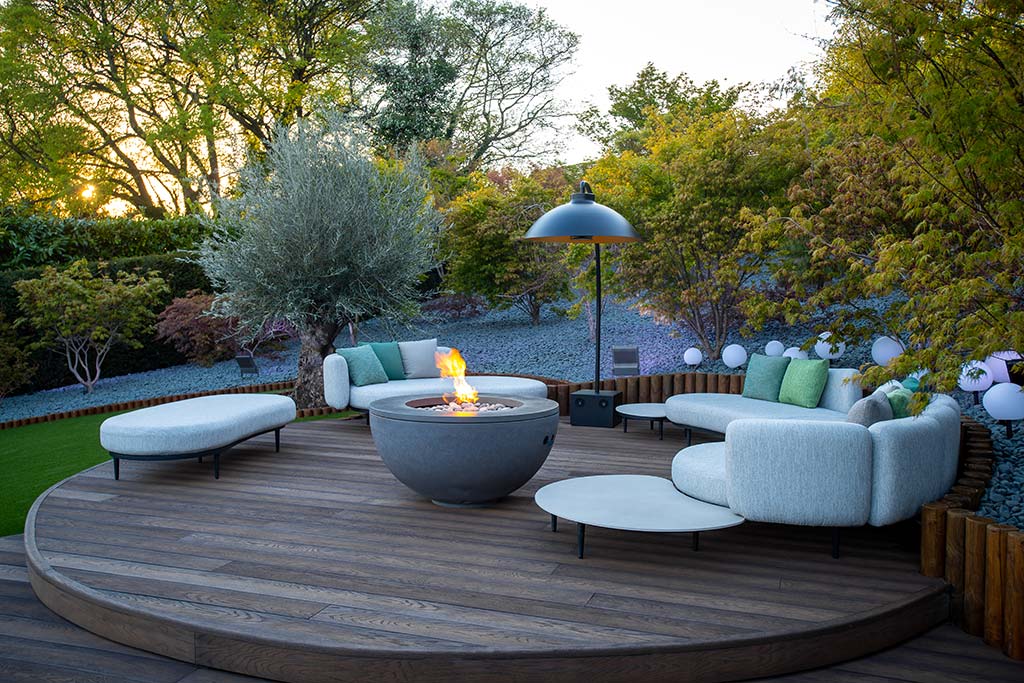
Image: Circular deck, Millboard composite (see case study)
Composite decking
The advantage of composite decking boards is that they are relatively maintenance free and slip resistant. Good quality composite decks maintain their appearance over many years, with minimal fading.
Composite decking comes in a wide variety of prices. The price generally reflects the quality of the product. At the bottom end of the range, you will find hollow-core vinyl boards with printed or moulded grain designs that are often not very realistic in appearance. These ranges frequently lack the trim pieces required to achieve a quality look and rely on end caps and corner brackets to conceal where the boards have been cut. At the higher end of the spectrum, you will find solid core composite boards that visually resemble timber more closely and can be used to construct built-in seating and other structures traditionally clad in timber.
High quality composite boards look very realistic. Millboard for example is made in moulds taken from actual timber and hand finished to achieve the natural variation you would find in wood. It’s available in a smooth and a driftwood finish, both of which have a high enough resin content to be in direct and permanent contact with water, which makes it a great solution for decking around pool areas and jetties.
If your decking includes curves, some composites have neat, flexible trim and fascia pieces that finish the edges of curved decks beautifully.
Most composite manufacturers guarantee composites for a lifespan from 10 to 25 years but some will last longer.
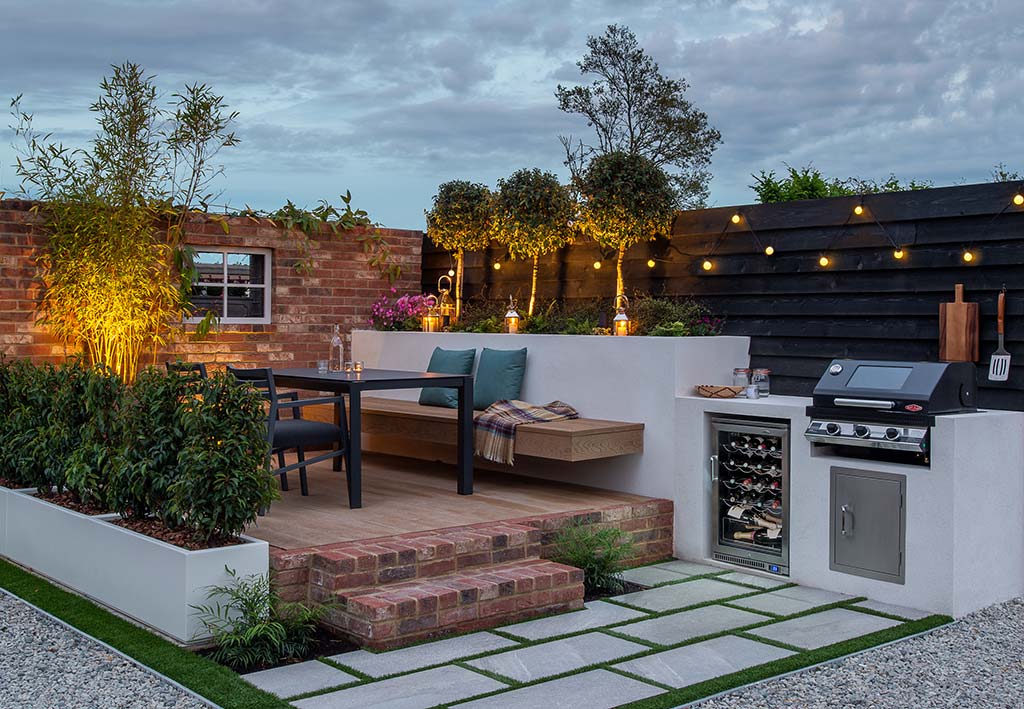
Image: Deck and floating bench, Millboard composite (see case study)
Subframes for decking
Your decking boards are only the visible part of your deck. The boards are attached to a subframe, either directly through the boards via screws or as part of a concealed system whereby grooved board edges are held together by metal clips that are screwed into the subframe.
The subframe consists of joists and cross braces, and unless your deck sits on pedestals over a concrete surface, the subframe will be carried by posts, which are fixed into the ground with concrete.
The materials and methods used to construct this subframe determine its durability. It is important to specify a subframe for your deck with a similar or longer lifespan than the boards. After all, it would be false economy to splash out on a premium board and find that the subframe disintegrates years before the boards would otherwise have to be replaced.
Water is the biggest enemy of your subframe. Where the posts meet the ground or wherever water can puddle, wood will rot- unless protected.
Here are some options for decking subframes starting with the most expensive to the least expensive:
- Aluminium posts and joist systems such as DuoSpan: Infinitely durable, these offer great structural integrity over time as the material does never swell or warp as can be the case with timber
- Steel posts, ground screws or composite posts with composite joists: Both materials are impervious to water, however, many contractors do not like working with composite timber alternatives as it can be more labour intensive, which will be reflected in their price
- Steel or composite posts with timber joists: Timber must be pressure-treated, and any cuts must be treated on site to avoid water infiltrating the wood through the end grain of the cut. All horizontal edges must be taped with bitumen tape
- Timber posts and joists: This is the most commonly used and cheapest type of subframe. It is also the least durable, unless all edges are protected and the timber posts are treated with at least two coats of properly cured bitumen paint to well above ground level.
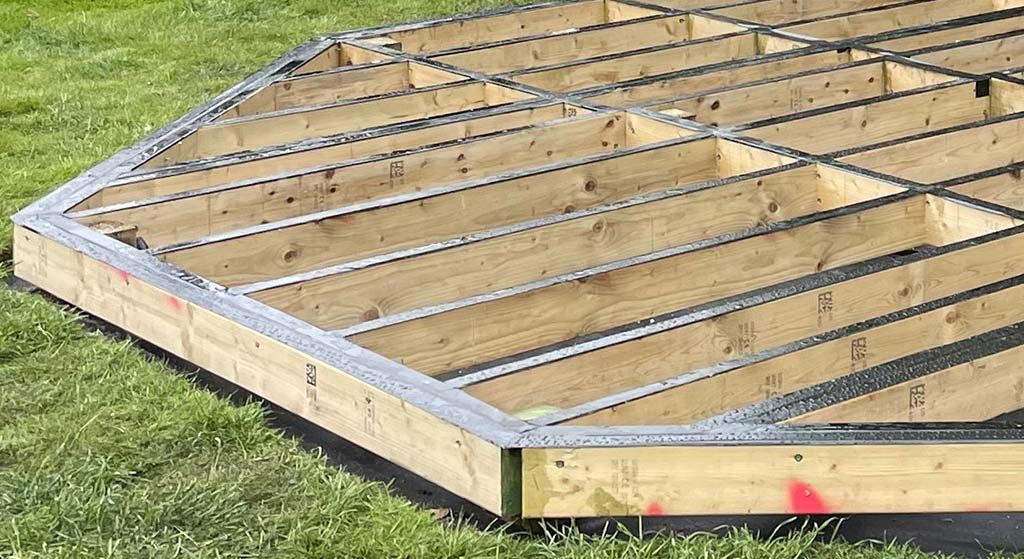
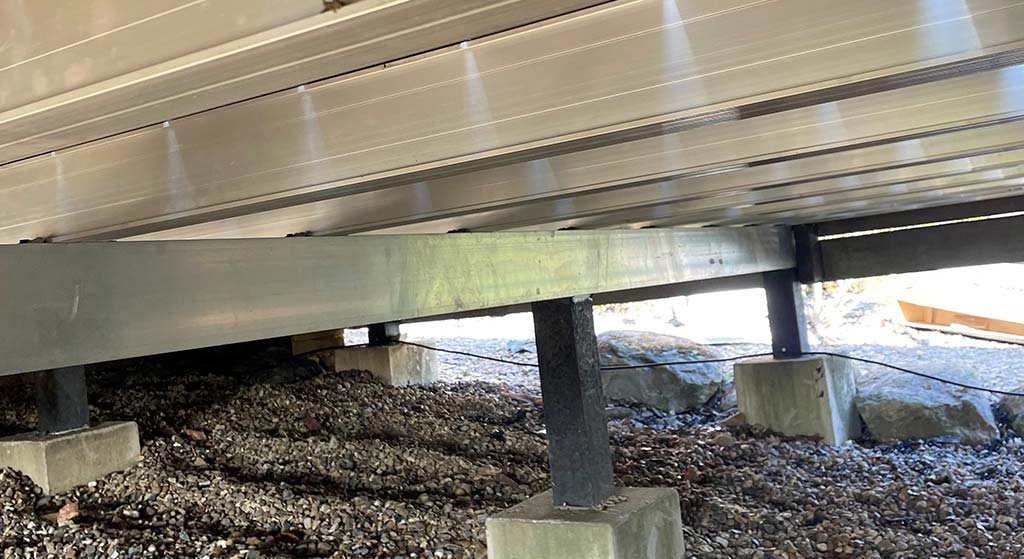
Image 1: Timber subframe with taped edges for waterproofing (image courtesy of Fairdeck.co.uk)
Image 2: Plaspro posts with DuoSpan joists (image courtesy of Fairdeck.co.uk)
How much should you spend on your deck then?
Buy the best deck you can afford if you expect to remain at the property for a long time. It is helpful to compare the cost per year of a high-quality deck and subframe to that of two or three low quality decks over the same period. Even if that comparison breaks even, why not enjoy a great looking deck from the start without having the hassle of rebuilding or ongoing maintenance?
Tips for hiring a decking contractor
Assuming you have found this article because you would like to would like to commission someone to build a deck for you, here are some tips for ensuring you get what you pay for:
- Interview several contractors and find out what they suggest for your budget.
- Ask what they will do during the construction process to ensure a durable result. If they don’t waterproof timber subframes as described above as a standard, look elsewhere.
- Choose a decking board and beware of contractors suggesting cheaper substitutes.
- Ask how long the contractor has been in business, whether you can see some photos of projects during construction and what warranty is provided.
- As part of your quotes, request materials specifications and a description of the building method and waterproofing. This will allow you to compare like for like, and you will have recourse should the installation be carried out differently from what was specified.
- And lastly, keep an eye out while the frame is being assembled to ensure no shortcuts are made.